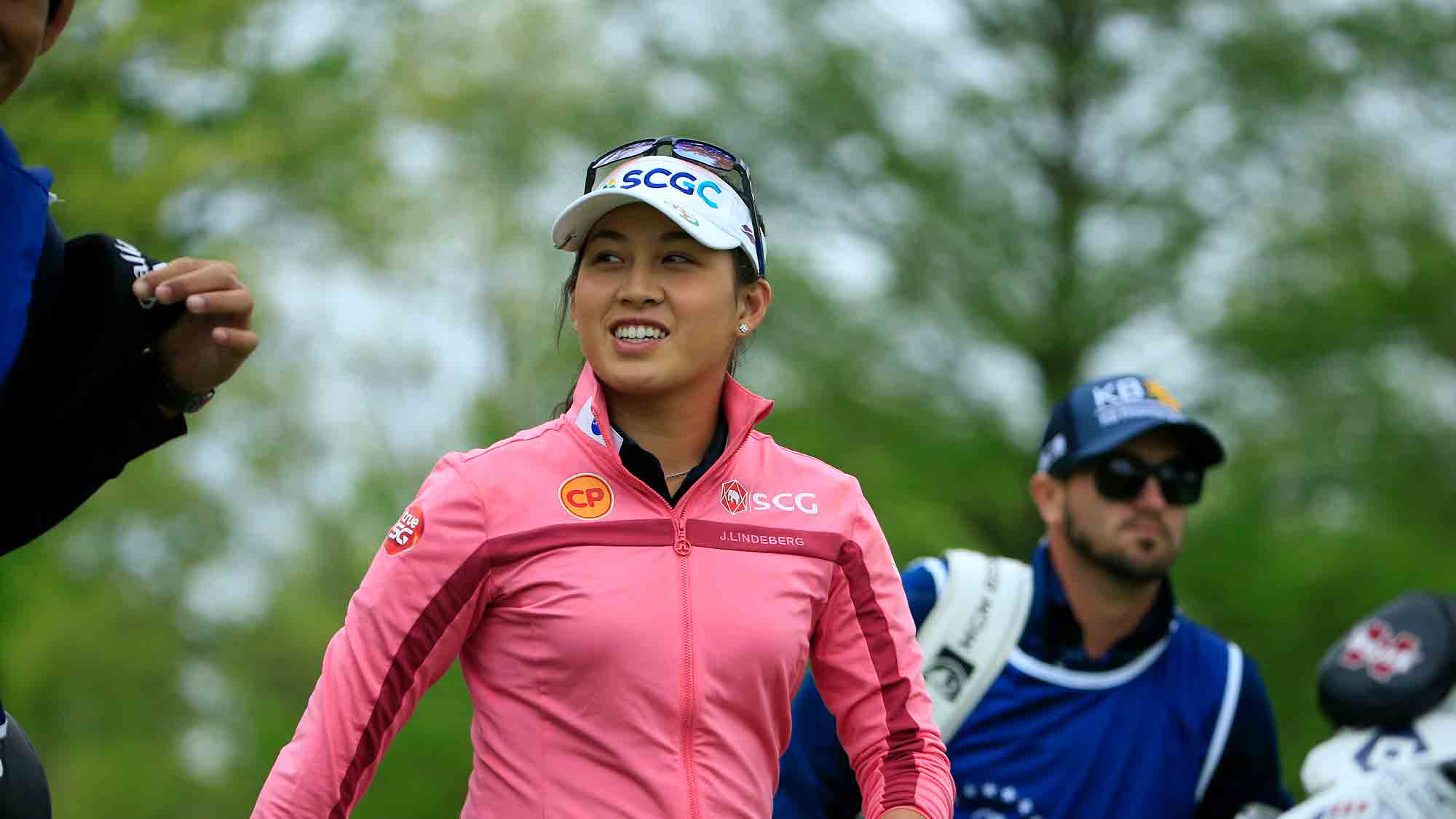Earlier this year, in the final round of the JTBC Classic presented by Barbasol, LPGA Tour rookie Atthaya Thitikul started the day six shots off the lead. She would need an incredible Sunday performance to give her even the slightest chance at a big comeback victory. She went out and did it, firing a 64 and then winning a playoff against Nanna Koerstz Madsen.
Thitikul hit eight approach shots inside 15 feet on that Sunday. She gained more than three full strokes on the field with her approach play in the final round, most of any player. The rookie was especially dialed in on her approach shots from 100 to 125 yards out, averaging inside 17 feet for the day – 6 feet better than the LPGA Tour average. Thitikul was also a perfect three-for-three that day on putts from 5 to 10 feet – a range where LPGA Tour players make 55.9% of their putts overall on the season.
Before the launch of KPMG Performance Insights, none of those details would have been available.
“To me, having the extra data helps to tell the story of the competition, the way players are competing against each other,” said major champion and NBC Sports golf analyst Karen Stupples. “Not just the personal stories. It allows analysts and golf writers to write or talk about the play without necessarily being on-site. It means more people are talking about the play on the LPGA than before.”
Perhaps no sport lends itself to descriptive statistics and the time to explain them more than golf does. Every shot – from the decisions made before the swing, to everything that happens until the ball stops moving – is permeated with numbers. Since the launch of KPMG Performance Insights last year, the LPGA Tour has more access to detailed stats than ever before.
“I really think that when you are a player or an analyst, it’s east to just see the world through the same lens,” said Stupples. “Having more stats enables you to compare to other tours, to compare what, say, Nelly (Korda) does in relation to what (Scottie) Scheffler does.”
Korda gleans her biggest advantage over the competition with her driver, with 39% of her strokes gained coming off the tee. Since tracking began in 2021, Korda is one of three players to average a full stroke gained or more per round in that discipline. Scheffler’s biggest weapon in 2022 has arguably been his iron play, with more than 55% of his strokes gained coming on approach shots. Scheffler has leapt up 70 ranking spots in strokes gained approach this season compared to last.
“Having better and more specific data has helped us understand player’s strengths and weaknesses, and better compare players to each other,” said NBC Sports analyst Paige Mackenzie. “If we don’t have great data we can only speak about what we see, or background stories about players. By having data, fans can really appreciate how good they are.”
Minjee Lee, who recently won her second major in less than 12 months, has been arguably the best ball striker on the Tour in 2022. Both the traditional and advanced metrics support that notion: she’s ranked sixth on Tour in both total driving and greens in regulation. She leads the LPGA Tour in strokes gained tee-to-green per round.
Three players are ranked in the top-15 on Tour in both strokes gained putting and strokes gained approach: Jin Young Ko, Lydia Ko and Danielle Kang. They are ranked first, fourth and 13th in the world, respectively.
“I think for me the numbers around putting are the biggest eye opener,” Stupples said. “We have only ever had total putts and putts per G.I.R. in the past. Now we know what the make percentage is for the LPGA players.”
Players on the LPGA Tour this season have made 29.4% of their putts from 10 to 15 feet away. That’s very close to the PGA Tour average this season from that range – 29.9%. Lydia Ko is the only LPGA Tour player to make more than 100 putts of 10 feet or longer this season. She leads the Tour in strokes gained putting per round.
Dottie Ardina is making 34.5% of her putts from 15 to 20 feet this season. Only two players on the men’s tour have made more than 30% of their putts from that range in 2021-22.
“I love to go and see how close players are hitting it from different distances and how they are putting,” said Stupples. “It allows me to talk about exceptional play or poor play and have numbers to back it up without listeners having to just take my word for it. It adds credibility to my words.”
KPMG Performance Insights are helping broadcasters tell better stories about the world’s best players, building fan interest and understanding. Only about a year into the project, the best is still yet to come.


Leave A Comment